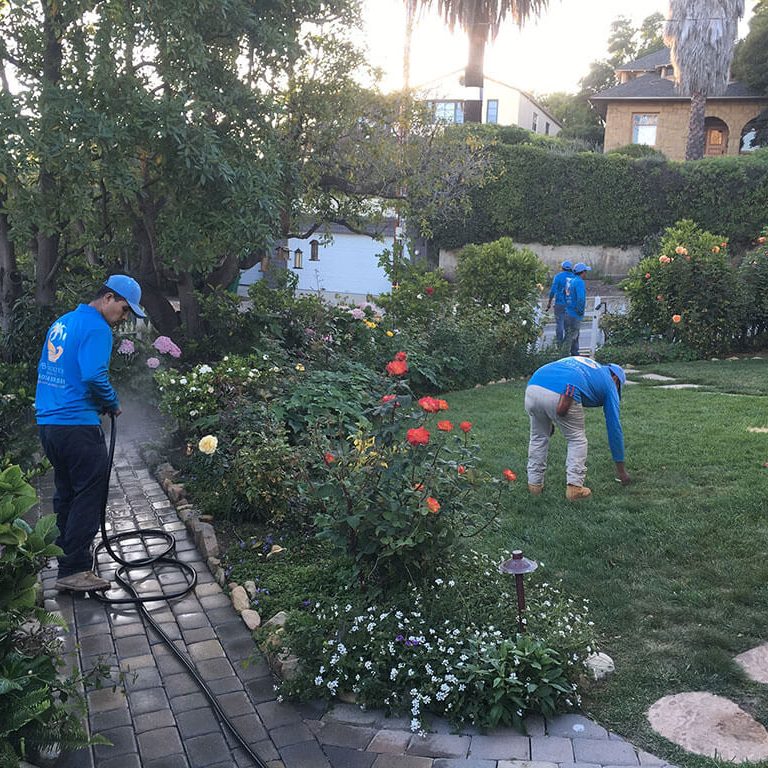Santa Barbara Landscape Drainage System Tips – French drains
Avoid the Swamp: How to Properly Drain Your Santa Barbara Landscape
When planning or even assessing your property’s landscape, determining its drainage pattern and developing a plan for the removal of stormwater is an important element to the overall design. To do so means protecting your home’s foundation, keeping soil moisture at appropriate levels for plant growth, controlling the invasion of disease-bearing pests and mold, and keeping excess water off adjacent properties. Fortunately, there are several options for handling runoff, many of which can be built into the aesthetic of the landscape. Below are just some of the ways drainage can be managed on a site; often more than one is used together in a system.
Surface drainage
Proper grading will help direct way away from areas where it is unwanted, such as at foundation walls and other structures where inundation can result in leaks and costly damage. Filling low spots, too, can help reduce the tendency of mosquitoes to breed as well as mitigate the formation of mold spores and mossy invaders. Surface drainage, however, must have an end point at which water is captured and conveyed in a safe and non-destructive manner from the site’s boundaries without sending water onto adjacent properties. Thus, some of the more structural methods listed below may be used in concert with grading and earthwork design.
Area drains
Hard surfaces and a low spots in the lawn area can benefit from a small area drain, placed to capture the flow overland of water. An area drain is essentially a small inlet connected via pipe to a larger system—usually a municipal storm line—that takes stormwater away from the site. The area drain can be fashioned to blend geometrically with pavers or concrete, or can be camouflaged with rocks or plant material in the softscape.

Rock channel
Often referred to as a “French drain,” not to be confused with a trench drain, an open channel in the landscape is a more intentional way of controlling stormwater flow through the landscape. While a French drain is generally thought of as a ditch, it can be an attractive addition, particularly when it is formed with small boulders or attractive aggregate materials. A rock channel may direct water then to an area drain or inlet, or it might discharge water to a creek or waterway. The method is considered ecologically sustainable as it is very effective in cleaning the stormwater of pollutants and sediment before sending it on its way off the property.
Rain garden
A well-designed rain garden is a way of capturing and treating drainage on site, thus reducing the discharge of stormwater to just an overflow amount during times of heavy rain. Equipped with an inlet that sits above a prescribed high-water level, the rain garden is designed to contain water that is then taken up by moisture-loving plants and percolated into the soil through aggregates and fast-draining soils below. A rain garden—also often called a “biocell”—is one of the most ecologically-friendly ways of handling stormwater and, in some municipalities throughout the country, can render a discount from local sewer districts.
The best way to resolve drainage issues in the home landscape is to first evaluate the issues, such as where water sits for too long after a rainstorm, and then reach out to a local landscape design and contractor who can recommend how to incorporate attractive and appropriate methods of drainage into your property.

Why Choose Us?
Retaining a professional gardener does not mean relinquishing credit for your lush garden. Sometimes even the most dedicated homeowners know that calling in help is part of the job of maintaining a stunning landscape. And even if you deem yourself a “black thumb” when it comes to gardening, do not give up on the opportunity to enjoy the beauty of your outdoors. Your Santa Barbara gardener and landscape professional can help create a maintenance program that is right for your budget and your garden.

